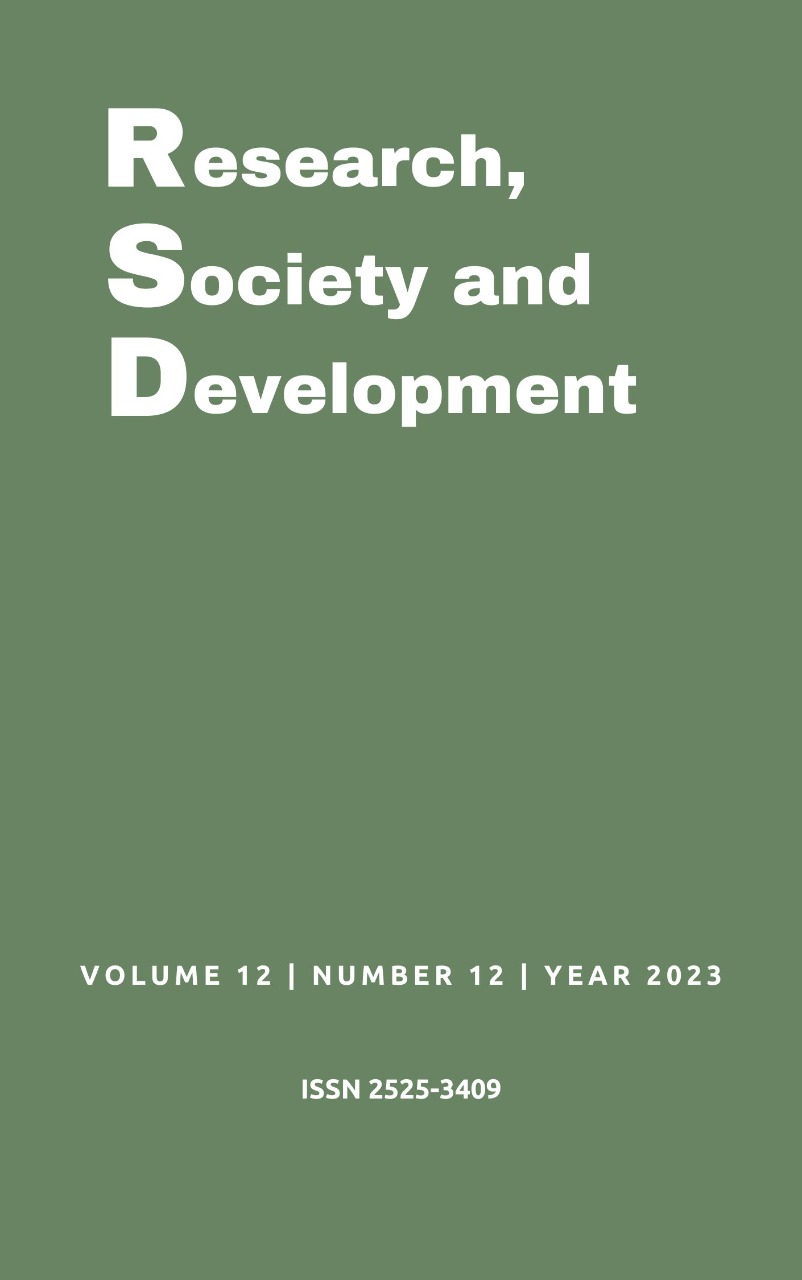Use of microcurrent as a treatment for static facial wrinkles: A bibliographic study
DOI:
https://doi.org/10.33448/rsd-v12i12.44063Keywords:
Electrical biostimulation, Anti-aging effects, Facial aesthetics.Abstract
Introduction: The degradation of collagen and elastin results in the formation of wrinkles and loss of skin elasticity, characterized by a decrease in elastic fibers and collagen stiffness. Microcurrent is an approach aimed at emitting bioelectrical signals from the human body, generating electrical current to compensate for reduced bioelectricity in aged or injured cells. Objective: This literary review seeks to analyze the effects of using microcurrent on static wrinkles in the middle and upper third of the face. Methodology: The research constitutes a bibliographic review carried out through searches in databases such as LILACS, PUBMED, and GOOGLE ACADÊMICO, as well as other relevant sources. The inclusion criteria cover free articles in Portuguese, published between 2007 and November 2023, related to the topic, while the exclusion criteria include studies outside the scope or carried out on animals. Results: The literature indicates that microcurrent is more effective when applied with electrodes fixed to the skin, compared to pen-type electrodes, and when associated with other currents. Mild, moderate and severe complications were observed. Conclusion: This research highlights the need for additional studies, as there is no consensus on the effectiveness of MENS in static wrinkles. Some studies advocate the combination of MENS with other anti-aging treatments or cosmetics, while others indicate the isolated effectiveness of MENS application.
References
Agne, J. E. (2005). Eletrotermoterapia: teoria e prática. Orium.
Bagatin, E. (2017). Mecanismos do envelhecimento cutâneo e o papel dos cosmecêuticos. Rev Bras Med, 66(supl.3).
Borges, F. (2006). Modalidades terapêuticas nas disfunções estéticas. Phorte.
Borges, F. S. (2010). Dermato-funcional: modalidades terapêuticas nas disfunções estéticas (2a ed.). Phorte.
Da Silva, R. M., & Andreata, M. F. G. (2018). Rejuvenescimento facial: a eficácia da radiofrequência associada à vitamina C. Maiêutica-Atividades Físicas, Saúde e Bem Estar, 1(1).
Dias, E. S., et al. (2017). Microcorrente associada à vitamina C na hiperpigmentação periorbital: Um estudo de caso. Id on Line Rev. Psic., 11(35).
Felipe, P. M. (2011). Os efeitos da microcorrente com eletrodos móveis sobre as linhas de expressão na região orbicular do olho (Tese de graduação não publicada).
Froes, P. (2014). Microcorrente rejuvenesce. Mito ou verdade. http://negocioestetica.com.br/site/microcorrente-rejuvenesce-mito-ou-verdade/
Games, L. F., & Kamizato, K. K. (2016). O uso de microcorrentes na revitalização cutânea. Revista Método do Saber, 8(11).
Guirro, E. C. O., & Guirro, R. R. J. (2004). Fisioterapia Dermato-Funcional: Fundamentos, recursos e patologias (2a ed.). Manole.
Hayflick, L. (1997). Como e por que envelhecemos (2a ed.). Campus.
Jackson, A. E., & Durães, P. B. (2020). Ação da microcorrente no envelhecimento cutâneo (Monografia não publicada).
Kede, M. P. V., & Sabatovich, O. (2004). Dermatologia Estética. Atheneu.
De Macedo, A., & Costa, M. (2015). Tratamento de rugas: uma revisão bibliográfica sobre carboxiterapia, radiofrequência e microcorrente. Revista Visão Universitária, 2(1).
Neurodyn. (2009). Manual de operação Neurodyn estética (7a ed.).
Oliveira, V. C. (2011). A eletroestimulação por microcorrentes na revitalização facial (Monografia de graduação). Faculdade Redentor Instituto Itesa.
Pereira, J. M., Koerich, M. H. L., Sabatini, M. T., & Silva, R. C. (2006). A Utilização de Microcorrentes no envelhecimento Cutâneo. Revista FisioBrasil, 11(87). http://www.patriciafroes.com.br/gestao/img/publicacoes/Artigo%202.pdf
Robinson, A. J., & Snyder-Mackler, L. (2002). Eletrofisiologia Clínica: Eletroterapia e teste eletrofisiológico (2a ed.). Artes Médicas.
Souza, S. L. G., Braganholo, L. P., Ávila, A. C. M., & Ferreira, A. S. (Physiotherapeutics Resources Used In Face Aging Treatment).
Souza, S. L. G., et al. (2007). Recursos Fisioterapêuticos Utilizados no Tratamento do Envelhecimento Facial. Revista Fafibe on-line, 3.
Sonnewend, D., Oliveira, J. L. R., Silva, C. R., Nicolau, R. A., Zângaro, R. A., & Pacheco, M. T. T. (2005). Avaliação do efeito da microterapia celular sobre o processo inicial da cicatrização de feridas em ratos.
Zuim, P. R. J., et al. (2006). Evaluation of microcurrent electrical nerve stimulation (MENS) effectiveness on muscle pain in temporomandibular disorders patients. J. Appl. Oral Sci., 14(1), 61-66.
Downloads
Published
Issue
Section
License
Copyright (c) 2023 Andressa de Oliveira Gomes; Lorraynni Ferreira Buarque; Naiane Bezerra Mota Sousa

This work is licensed under a Creative Commons Attribution 4.0 International License.
Authors who publish with this journal agree to the following terms:
1) Authors retain copyright and grant the journal right of first publication with the work simultaneously licensed under a Creative Commons Attribution License that allows others to share the work with an acknowledgement of the work's authorship and initial publication in this journal.
2) Authors are able to enter into separate, additional contractual arrangements for the non-exclusive distribution of the journal's published version of the work (e.g., post it to an institutional repository or publish it in a book), with an acknowledgement of its initial publication in this journal.
3) Authors are permitted and encouraged to post their work online (e.g., in institutional repositories or on their website) prior to and during the submission process, as it can lead to productive exchanges, as well as earlier and greater citation of published work.


